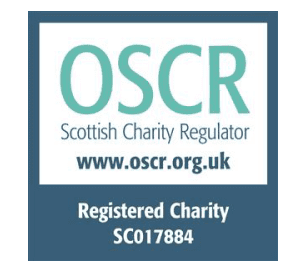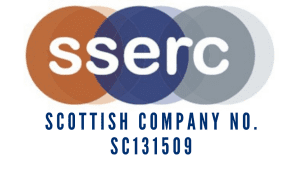Welcome to the Advanced Higher Chemistry page.
We have made a start uploading resources for experimental work that could help to support teaching of the course. Don’t worry there’s quite a bit more to come.
The resources are accessed from the unit pages which you can get to from the links below.
Alternatively you can use the search facility or you can find a list of all the chemistry resources here.
If you think activities of ours are of use in areas of the course we have not mentioned, please let us know so we can add the information in.
Use the links below to find the resources you need:
a. Electromagnetic radiation and atomic spectra
Spectroscope (DVD) – Construction of a DVD spectroscope. Now with a new version that attaches to a smartphone.
Flame Colours – A series of simple methods to carry out flame tests.
Sodium absorption – an activity with filter paper soaked in brine used to observe the sodium absorption spectrum
b. Atomic orbitals electronic configurations and the Periodic Table
c. Transition metals
Oxidation States of Vanadium – an experiment to demonstrate all 4 oxidation states of vanadium.
Oxidation States of Manganese – a demonstration of all the oxidation states of manganese from II to VII.
Colour change chameleon – An attractive reaction that passes through several of the different coloured oxidation states of manganese.
Iron Drops – a series of drop-scale reactions investigating a variety of reactions of Iron II and Iron III.
Copper amino complexes – This practical involves the preparation of 2 isomers of copper and glycine and goes on to examine them by means of infra-red spectroscopy.
Ligands of copper complexes – In a series of reactions, different ligands displace each other from complexes with copper.
Catalyst at work (Demo) – Rochelle Salt and hydrogen peroxide, catalysed by cobalt schloride, shows the formation of a different coloured temporary intermediate.
Use the links below to find the resources you need:
a. Chemical equilibrium
Equilibrium and Le Chatelier – An equilibrium between two different coloured species that changes position with temperature.
Equilibrium Constant Measurement – A simple method of measuring an equilibrium constant. In this case of the equilibrium between silver and iron III ions.
Equilibrium of Carbon Dioxide in Water – a simple, fun activity using methyl red and a Luer-lock syringe to show the effect of pressure on the solubility of CO2 in water.
Equilibrium Modelling – three simple and entirely safe ways of modelling dynamic equilibria to help pupils’ understanding.
Partition of Iodine – a simple reaction showing the equilibrium resulting from the partition of iodine between water and an organic solvent
Partition of iodine – One of the old AH PPAs. A more complex version of the previous reaction. Titrating samples from the two layers to determine the partition coefficient. (AH)
Acids and bases
Indicators – microscale – A series of small scale investigations into indicators.
Rainbow reaction (Demo) – Form a rainbow of colours to illustrate the pH scale with hydrochloric acid and sodium carbonate along the length of a burette.
Strong and Weak Acids– A simple investigation into some of the properties of strong and weak acids.
Buffers
Seawater buffering – a very simple but striking demonstration of the buffering effect of salts in seawater.
Ocean Acidification – An investigation into the causes and effects on the oceans of CO2 in the atmosphere.
b. Reaction feasibility
Cool Experiment – An endothermic reaction freezing a beaker to the bench.
A Thermodynamic Prediction – One of the old AH PPAs. Measuring the volume of CO2 produced when sodium hydrogencarbonate is heated – finding the decomposition temperature and seeing how this compares with a value predicted from thermodynamic data.
c. Kinetics
Bleaching Blue Food Dye – An experiment using cheap reagents (blue food dye and bleach) to determine the rate constant and order of a bleaching reaction.
Propanone iodine reaction – Propanone reacts with iodine and the rate of the reaction can be followed by removing samples at intervals and titrating with sodium thiosulphate.
Use the links below to find the resources you need:
a. Molecular orbitals
Azo-Dyes – A simple way to prepare some azo-dyes on a test tube scale
Tomato-Bromine Rainbow – a fascinating reaction showing, by the changing colours of lycopene in tomato juice, the effect of changing the length of a conjugated system on its colour.
Spectroscope (DVD) – (c),(i) Construction of a DVD spectroscope. Now with a new version that attaches to a smartphone.
b. Synthesis
alcohols
Microscale Dehydrating alcohols – Alcohols are dehydrated using an aluminium oxide catalyst to give alkenes
Preparation of cyclohexene – One of the old AH PPAs. Dehydration of an alcohol to give an alkene. In this case cyclohexene from cyclohexanol.
Esters – A quick synthesis of some esters found in pear drops. The method can be adapted to use a wider range of acids and alcohols
Equilibrium constant of an ester – A procedure for the synthesis of methyl ethanoate. It can be carried out as a simple symnthesis without determining the constant.
ethers
Ether Runway – a striking demonstration of fire hazards. Denser than air ethoxyethane vapour runs down a length of guttering and is ignited.
alkenes
Microscale Dehydrating alcohols – Alcohols are dehydrated (using aluminium oxide as a catalyst) to give alkenes
carboxylic acids
Hydrolysis of ethyl benzoate – One of the old AH PPAs. Alkaline hydrolysis of ethyl benzoate and purification of benzoic acid.
Synthesis of Aspirin – One of the Old AH PPAs. Aspirin is prepared by the condensation reaction between 2-hydroxybenzoic acid (or salicylic acid) and ethanoic anhydride
amines
aromatic hydrocarbons
c. Stereochemistry
Copper amino complexes – preparation of cis and trans isomers of a copper-glycine complex.
Food Science – The link ‘Structural sublety’ has a simple example of the enantiomers of carvone
d. Experimental determination of structure
e. Pharmaceutical Chemistry
a. Common chemical apparatus
Information on how to handle apparatus and carry out a variety of procedures can be found in the Chemistry Skills section of the SSERC website.
b. Skills involved in experimental work
As well as advice in the link above, there is a large selection of experiments on the SSERC website that will help develop particular skills.
eg Vitamin C in Vegetables – an activity to determine the concentration of Vitamin C in fruit and vegetables by titration against DCPIP.
c. Stoichiometric calculations
d. Gravimetric analysis
Microscale Water in a hydrated salt – Using a bottle-top crucible and a spirit burner to determine the amount of water in hydrated salts.
Gravimetric analysis of water in hydrated barium chloride – One of the old AH PPAs. Similar to the above but using more conventional laboratory equipment.
Gravimetric analysis of Nickel – An alternative to the PPA above. A weighed sample of a nickel saly is complexed with dimethyl glyoxime to produce a precipitate that is filtered, dried and reweighed to determine the original % of Nickel
e. Volumetric analysis
Water Testing – A series of differing procedures to test for mineral content in water. boron, calcium, carbonates, iron, magnesium, nitrates, nitrites and phosphates. Calcium & magnesium are determined by complexometric titration using EDTA.
Cobalt Complexes – Synthesis and analysis of amino-cobalt complexes (Including a titration)
According the the SQA Website
“The general aim of this Unit is to develop skills of scientific inquiry, investigation, analytical thinking, independent working, and knowledge and understanding of researching chemistry. In this assessment the candidate will carry out an in-depth investigation of a chemistry topic. The topic will be chosen by the candidate, who will individually investigate/research the underlying chemistry of the topic. This is an open-ended task which may involve a significant part of the work being carried out without supervision.”
Here are links to:
General Assessment Information for Advanced Higher Chemistry – An SQA document from September 2016
Producing and Submitting Coursework – The current SQA guide
A Guide to Practical Work – an Education Scotland guide from 2012 – still very relevant and the latest issue.
Chemistry Practical Guide – Support Materials – a companion document to the above with details of techniques and a useful set of investigation ideas.
And a couple of older but still useful documents
A Guide to Practical Work – previous version of the 2012 guide above, from 2005 but not yet obsolete
Starter_investigations – Again from 2005 (previous version of the support materials above) but has some good investigations in it
The PPA activities from the old Advanced Higher are still widely used. However, some considerable time has elapsed since they were devised and some aspects, particularly the Health & Safety information is out of date. Accordingly we have produced revised versions of all the experiments as well as model risk assessments.
All the ones we can find are linked below.
Unit 1 PPA 1 – Preparation of potassium Trioxalatoferrate(III)
Unit 1 PPA 2 – Colorimetric Determination of manganese in Steel
Unit 2 PPA 1 – Complexometric Determination of Nickel using EDTA
Unit 2 PPA 2 – Gravimetric Determination of Water in Hydrated Barium Chloride
Unit 2 PPA 3 – Determination of a Partition Coefficient
Unit 2 PPA 4 – Verification of a Thermodynamic Prediction
Unit 2 PPA 5 – Kinetics of the Acid-Catalysed Propanone/Iodine Reaction
Unit 3 PPA 1 – Preparation of Cyclohexene
Unit 3 PPA2 – Derivative Formation
Unit 3 PPA 3 – Hydrolysis of Ethyl Benzoate



